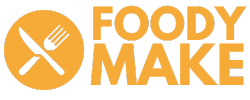In Addis Ethiopia, where I grew up, Injera is traditionally made with 100% teff flour. Teff, a highly prized ancient grain, the size of a poppy seed, is very nutritious and considered a superfood. Like sourdough, injera is made from a fermented sourdough starter, a thin batter that is fed water and wheat flours and left to rise.
Here in the United States, it is common to make Injera using grains other than teff. When I first came to the United States, I tried making Injera using only teff flour, but I had trouble fermenting the batter. In Ethiopia, fermentation had been easy, perhaps because of the climate, or perhaps because fermented starters had been established so long.
When I started a starter here, I added other flours such as brown rice, barley and wheat, until the batter began to ferment. Once my Injera starter was strong and active, I switched to 100% teff flour. I now make Injera only with teff, which means it’s much closer to the Injera made in Ethiopia, where I grew up, and it’s also gluten-free.
While many types of teff are available in Ethiopia, the two most commonly found in the United States are brown teff and light ivory teff. Differences in teff create differences in the appearance of Injera. When purchasing Injera from a store or restaurant, you may notice the difference in coloring. The darker colored Injera is usually made with 100% brown teff flour. Light-colored injera may be made with ivory teff, but may also contain other grains mixed into the batter. Be sure to ask the store or restaurant if the Injera they have available is made with 100% teff flour, as both types of Injera look very similar.

